
Bidimensional signals
We first consider the case of continuous representations. An image can be represented with a function f(x,y) associating a light intensity to a point (x,y) of the plane. To study the properties of image processing systems, we use some elementary bidimensional functions introduced here. The first function we consider is the bi-dimensional delta (or dirac) function, which is in fact a distribution and a simple extension of the monodimensional case.
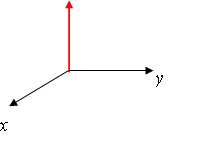
Any function f(x,y) can be defined using the following equation involving a two dimensional integral and the delta function as its kernel :
Using the bidimensional delta function, we also define the bidimensional comb function which corresponds to the juxtaposition of an infinity of shifted delta functions fully covering the plane (x,y),
The parameters
 and
and
 control the density of delta functions in the plane (x,y). The bidimensional unit step function (or heavyside function) U(x,y) is defined by:
control the density of delta functions in the plane (x,y). The bidimensional unit step function (or heavyside function) U(x,y) is defined by:
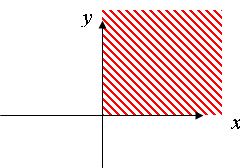
This function covers a quarter of the plane (x,y). The bidimensional rectangular function is noted rect(x,y) and defines a region of the plane (x,y) limited by a quadrilateral,
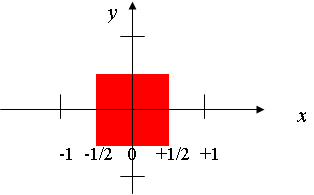
Sinusoidal signals represent another important category of elementary signals. In particular, they are used to extract the frequency components in the bidimensional Fourier plane (see section 2). A bidimensional S(x,y) sine function is characterized by its amplitude, phase, frequency and propagation direction. In the following example, the sine function is propagating along the y-axis and has a spatial frequency of .
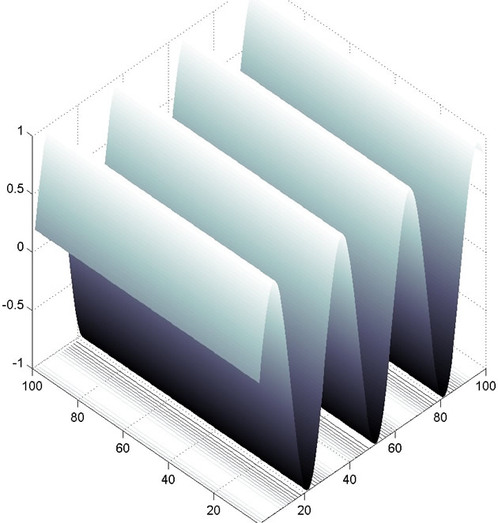
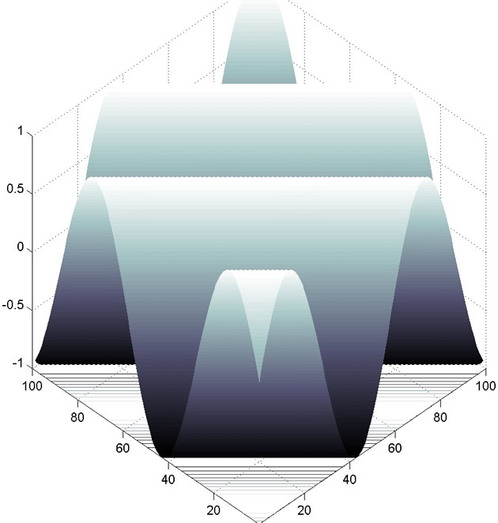
In order to be manipulated by a computer, the analog images are transmitted to an ensemble of processes leading to their discretization. The sampling and image quantization problems will be treated in the last chapter of this section. A discrete image is represented by a matrix of points called the pixels, I(m,n),
The bidimensional signal I(m,n) is a real or complex function of two completely independant variables m and n. The image size represents the region of variation of the integer values defining the image.
We now present the discrete representations associated with the various analog signals defined at the beginning of this chapter. The discrete bidimensional delta function
 iffers from its analog counterpart in the sense that it is not a distribution but a signal equal to 1 at (0,0) and 0 elsewhere. Any discrete image can be defined as a combination of shifted delta functions,
iffers from its analog counterpart in the sense that it is not a distribution but a signal equal to 1 at (0,0) and 0 elsewhere. Any discrete image can be defined as a combination of shifted delta functions,
CThis relation also defines the bidimensional convolution product between I(m,n) and
 and can be generalized by replacing
and can be generalized by replacing
 with a signal h(m,n) representing the discrete point spread function of a discrete bidimensional filter.
with a signal h(m,n) representing the discrete point spread function of a discrete bidimensional filter.
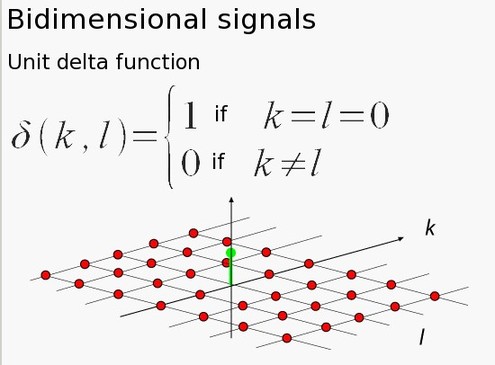
The following example defines an image composed of four delta functions located next to the origin,
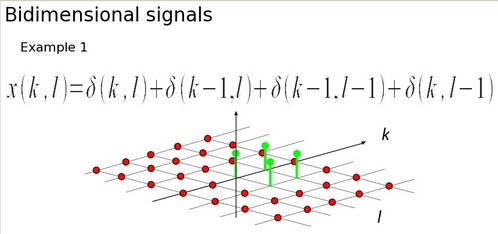
The discrete bidimensional unit step function U(k,l) defines a region corresponding to the top right quadrant of the plane (k,l) :
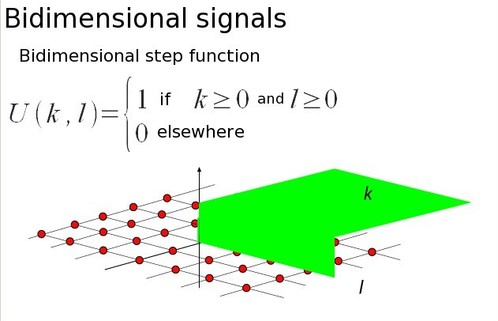
The discrete bidimensional rectangular function rect K,L (k,l) defines a rectangular region of parameters K and L. By convention, the bottom left corner coincides with the origin:
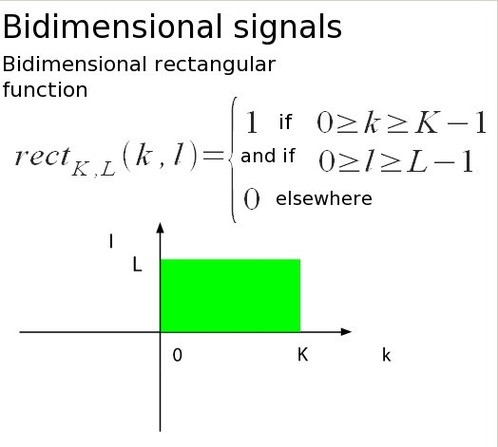
Separable signals represent an important class of bidimensional signals. A bidimensional signal x(k,l) is separable if it verifies the following property:
This property can be particularly advantageous when computing elaborate operations such as convolutions. Computations can then be treated by taking a unique dimension into account. The bidimensional delta function and step function are two examples of separable signals: